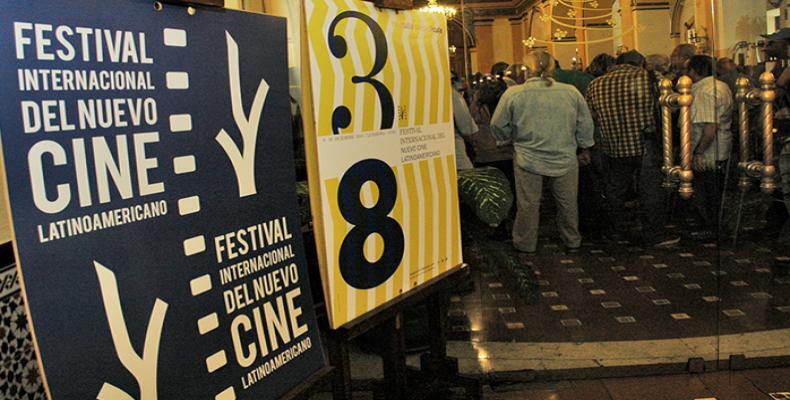JG: The 38th edition of the Havana Film Festival is under way until the 18th of December and a total of 18 full length films are competing for the 2016 Coral Award. With the participation of seven countries among which Argentina, Mexico and Chile are begiining to stand out in terms of the quality of their work. They have all come together in Havana with films that are giving rise to a wide spectrum of opinions since their first release in theatres internationally.
GJ: Today’s review is of The Chilean/Agentinan fiction movie Rara, a 92 minute 2016 co-production with English subtitles directed by Pepa San Martín. Rara was the best Feature Film at the Berlin, Rio de Janiero and San Sebatián Film Festivals earlier this year. San Martín is known also for Gleisdreieck (2012) and La Ducha (2011). Rara was written by Pepa San Martín and Alicia Scherson and it stars: Julia Lübbert as Sara; Emilia Ossandon as Catalina; Agustina Muñoz as Lia and Daniel Muñoz as Victor.
And the story line? Since their parents split up, Sara and her younger sister live with their mother, whose new partner is a woman Lia. Everyday life for the four of them is similar to that of other families. But not completely.
Rara, then, is about Sara, a 13-year-old girl in a town in Chile From its opening shot we get an accurate intimate glimpse into an adolescent's life as she grapples with the problems of growing up basically with two mothers . Each scene in the film is carefully constructed with economy of movement and script as Sara tries to make sense of her world and gain some sort of control over it by playing her mother against her father, unwittingly setting off a legal battle that may destroy what little remains of her home. Rara is full of sharp observations of this family’s dynamics. Sara's squabbles with her pesky, insecure sister are totally believable. So are the grown-ups' reactions as the stress builds. The characters and relationships depict a modern reality that both reflects the times Chilenos live in.
JG: Yes, In terms of the movie’s Chilean context, it surely comes in the wake of the Chilean Congress' legalization of same sex civil unions in January of 2015 and comes as many Latin American nations are extending rights to gay and lesbian citizens.
Legalizing same-sex marriage as opposed to Unions, possibly in 2017 would give Chilean couples additional welfare and state life insurance rights, among other benefits, and clarify adoption rules, according to gay rights groups.
GJ: Same-sex marriage has been legalized in recent years in Argentina, Brazil, Uruguay, and parts of Mexico, despite the influence of the Catholic Church, which opposes such unions. Chile, which returned to democracy in 1990 after a brutal 17-year military dictatorship, is by many measures Latin America's most economically developed country, but is less socially progressive than many of its neighbors.
In 2004, Chile became the last country in the Western Hemisphere to legalize divorce, and it is one of the few that still outlaws abortions in all cases - something that center-left President Michelle Bachelet is trying to change, against strong opposition.
JG: And, as a final word, in which theatre did you view Pepa San Martín’s Rara.
GJ: I’m glad you asked me about that Javier. I saw the movie in Havana’s truly iconic Cine Yara on 23 and L. It was 3 o’clock in the afternoon and the Yara was full. The usher with her flashlight had to find me a seat. I sensed a mature aged audience responding with intelligence and sensitivity to a demanding script. A lesbian couple, two youngsters trying to cope. And at the end of the movie the audience clapped enthusiastically and spontaneously. Clearly they were well informed about the director’s prior awards this year. It said a lot about Cuban cinema goers


